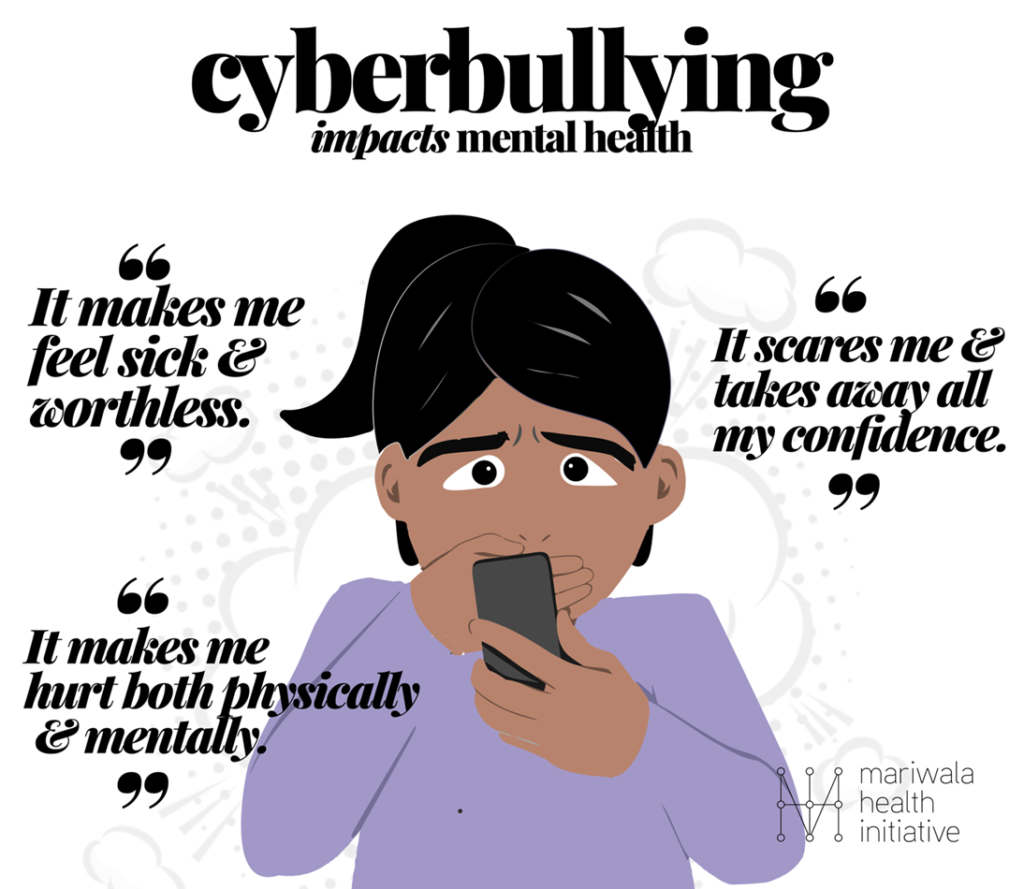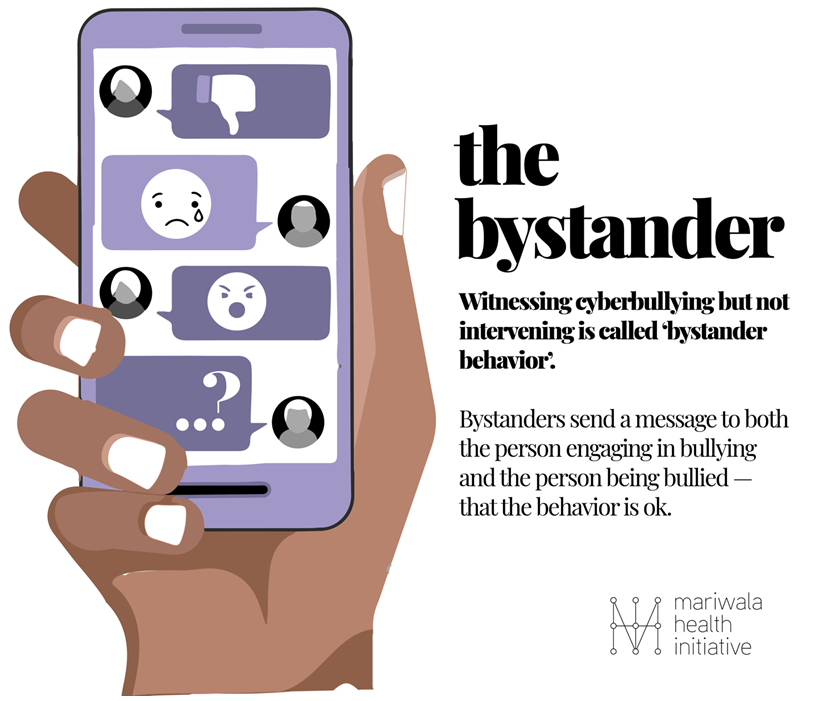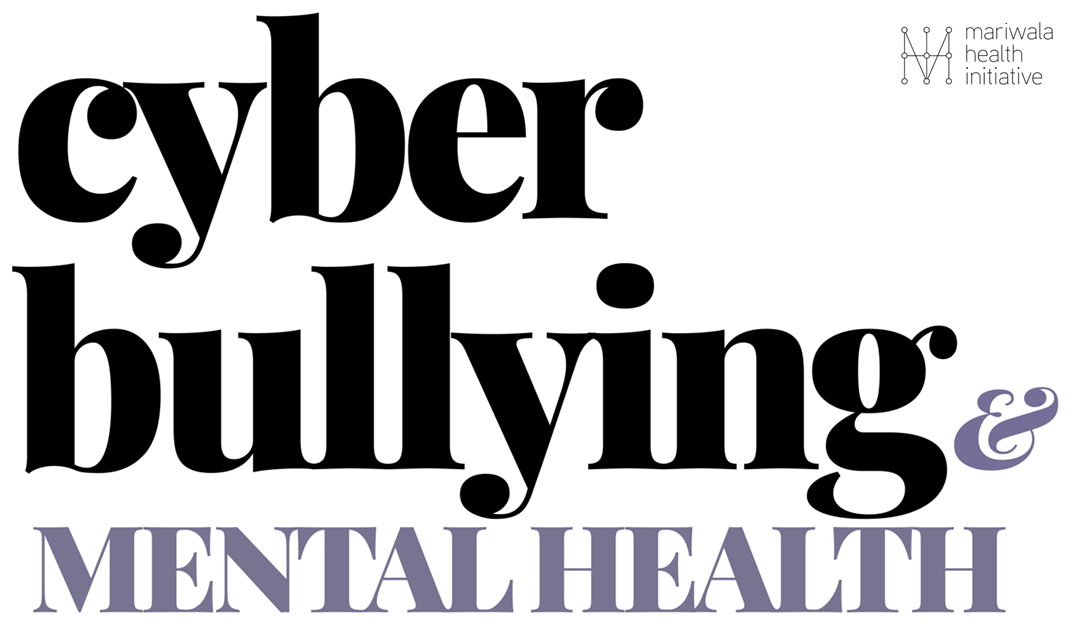What is Cyberbullying?
If a person is trying to bully or harass someone else online – for example on a social networking site – it is known as online or cyberbullying.
Chances are that you’ve either experienced cyberbullying yourself or witnessed this happening to someone you know.
If you’ve read rumors about a person online that were being spread with the intention of humiliating this person — that’s a form of cyberbullying. Most often, bullying starts offline (school, classes, playgrounds etc.) and then carries forward online as well.
Sometimes online bullying and harassment is easy to spot. Someone might post rumors about you, make threats, pass sexual remarks, share your personal information or pictures with others without your consent or use hate speech. And other times, it might be harder to tell if you’re being cyberbullied. Especially, if it is being done by someone you know well. For example, if you continue to receive emails or text messages from someone even after you’ve asked them to stop. Or someone repeatedly passes personal comments online that make you uncomfortable. Even being intentionally and cruelly excluded from an online group comes under the banner of cyberbullying.
Cyberbullying can be summed up as hurtful peer behaviour that is being intentionally/deliberately done, repeatedly and with the intention of harming the other person — via a phone, computer or any electronic device.

How does cyberbullying impact mental health?
As we’ve discussed, cyberbullying takes many forms — and because it’s online, it can happen anywhere, at any time of the day or night, which can make it feel inescapable. Exposure to such bullying and harassment seriously impacts one’s mental health and well-being.
Cyberbullying can cause deterioration in mental health.
Young people who have been bullied, online and offline, are much more likely to have a lower sense of self-worth and well-being. Being bullied is linked to mental ill-health conditions — for example depression — that are long-lasting. Research shows that children and young people who are currently experiencing a mental health problem are more likely to have been bullied online. Bullying also impacts other areas of a person’s life, such as their academic performance. Research data tells us that those experiencing cyberbullying are more likely to experience suicidal thoughts and behavior or have thoughts of self-harm.

Those most vulnerable to cyberbullying
There are certain groups of people who are more likely to experience cyberbullying on account of their age, gender, sexuality, ability, caste, class and socio-economic background.
Cyberbullying impacts certain vulnerable groups and identities more than others.
For example, children with special educational needs are more likely to be subject to persistent bullying. Similarly, girls are more likely to report having experienced cyberbullying than boys. LGBTQ young people, those from a migrant background or a marginalized caste/religious community, and children/young people from lower socio-economic backgrounds are also more exposed to cyberbullying. Children and young people with pre-existing or emerging mental health conditions – such as depression – are also at greater risk of experiencing cyberbullying than other groups. The vulnerabilities that these groups of children and young people experience mean they are more likely to experience cyberbullying.
How do others my age respond to cyberbullying?
It’s likely that you have witnessed a peer or stranger being bullied online. You could have either observed this happening and not intervened, defended the person being cyberbullied or contributed to the bullying yourself.

Witnessing cyberbullying but not intervening is called ‘bystander behavior’.
There are a number of reasons why you may have chosen not to intervene in cyberbullying. For example, you might have been concerned about your own safety. You might have been concerned that if you intervened, you would receive abuse or negative responses. Or, you might have not known what to say or how to intervene.
What you may not know, is that not intervening or being a silent bystander, also adds up to cyberbullying. Because when we don’t speak up against these forms of abuse, violence, or harassment — we are silently ‘normalizing’ such behavior. Bystanders send a message to both the person engaging in bullying and the person being bullied — that the behavior is ok. And overtime this ‘ups the frequency’ of such behavior and the intensity of these acts.
What are some steps that I can take today?
If you or someone you know is being bullied online, there are steps you/they can take to deal with the situation:
Reach out for help: If you are experiencing distress related to cyberbullying, reach out to someone whom you trust — a friend, relative or maybe even an adult you trust — who can help you work through the situation.
Use available technology and tools to cut off the bully: Most social media apps and services enable you to block someone else. They also enable you to report inappropriate online behavior or material.
Report cyberbullying: The Ministry of Women and Child Development launched a helpline (complaint-mwcd@gov.in) to report cyberbullying, online harassment, and cyber defamation, particularly against women and children.
Most colleges and universities have a Women Development Cell (WDC) that you can contact to report cyberbullying.
Protect your accounts: Don’t share your passwords with anyone, even your closest friends, and password-protect your phone so no one can use it to impersonate you.
How can I get help online?
If you, or someone you know, is experiencing distress related to cyberbullying or otherwise, there are mental health resources that you can avail for free.
iCall is a national, free helpline in India that provides counselling via phone, email or chat to anyone in need of emotional support, irrespective of age, gender, sexual orientation or race, and transcending geographical distances while ensuring confidentiality.
References:
https://youngminds.org.uk/media/2189/pcr144b_social_media_cyberbullying_inquiry_full_report.pdf
https://www.thebetterindia.com/71909/cyberbullying-it-act-2000-cyber-law-in-india/
https://www.lawtendo.com/blogs/what-are-cyberbullying-laws-in-india
https://www.sciencedaily.com/releases/2017/02/170221102036.htm
https://www.ncbi.nlm.nih.gov/pmc/articles/PMC5914259/
https://cyberbullying.org/Cyberbullying-Identification-Prevention-Response.pdf

